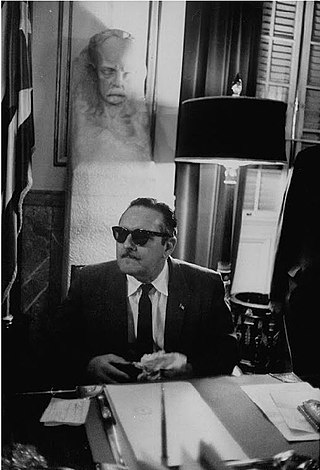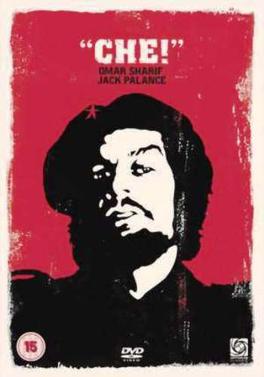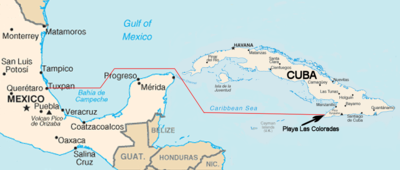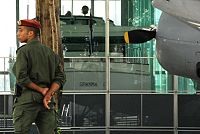
Raúl Modesto Castro Ruz is a Cuban retired politician and general who served as the first secretary of the Communist Party of Cuba, the most senior position in the one-party communist state, from 2011 to 2021, and President of Cuba between 2008 and 2018, succeeding his brother Fidel Castro.

The Cuban Revolution was the military and political effort to overthrow Fulgencio Batista's dictatorship which reigned as the government of Cuba between 1952 and 1959. It began after the 1952 Cuban coup d'état which saw former president and military general, Fulgencio Batista topple the nascent Cuban democracy and consolidate power. Among those opposing the coup was Fidel Castro, then a novice attorney who attempted to contest the coup through Cuba's judiciary. Once these efforts proved fruitless, Fidel Castro and his brother Raúl lead an armed attack on the Cuban military's Moncada Barracks on July 26, 1953. Following the attack's failure, Fidel Castro and his co-conspirators were arrested and formed the 26th of July Movement (M-26-7) in detention. At his trial, Fidel Castro launched into a two hour speech that won him national fame as he laid out his grievances against the Batista dictatorship. In an attempt to win public approval, Batista granted amnesty to the surviving Moncada Barracks attackers and the Castros fled into exile. During their exile, the Castros consolidated their strategy in Mexico and subsequently reentered Cuba in 1956, accompanied by Che Guevara, whom they had encountered during their time in Mexico.

Granma is one of the provinces of Cuba. Its capital is Bayamo. Other towns include Manzanillo and Pilón.

The 26th of July Movement was a Cuban vanguard revolutionary organization and later a political party led by Fidel Castro. The movement's name commemorates the failed 1953 attack on the Moncada Barracks in Santiago de Cuba, part of an attempt to overthrow the dictator Fulgencio Batista.

The Moncada Barracks were military barracks in Santiago de Cuba, Cuba named after General Guillermo Moncada, a hero of the Cuban War of Independence. On 26 July 1953, the barracks was the site of an armed attack by a small group of revolutionaries led by Fidel Castro. That day a simultaneous attack was carried out on the Carlos M. de Cespedes Barracks in Bayamo directed by Raúl Martínez Ararás by order of Castro. The attack failed and the surviving revolutionaries were imprisoned. This armed attack is widely accepted as the beginning of the Cuban Revolution. The date on which the attack took place, 26 July, was adopted by Castro as the name for his revolutionary movement, Movimiento 26 Julio, which eventually toppled the dictatorship of Fulgencio Batista on 1 January 1959.

Manuel Urrutia Lleó was a liberal Cuban lawyer and politician. He campaigned against the Gerardo Machado government and the dictatorial second presidency of Fulgencio Batista during the 1950s, before serving as president in the revolutionary government of 1959. Urrutia resigned his position after only seven months, owing to a series of disputes with revolutionary leader Fidel Castro, and emigrated to the United States shortly afterward.

Abel Santamaría Cuadrado was a leader in the Cuban Revolutionary movement.

Celia Sánchez Manduley was a Cuban revolutionary, politician, researcher and archivist. She was a key member of the Cuban Revolution and a close colleague of Fidel Castro.

Fidel is a 2002 mini-series by David Attwood that describes the Cuban revolution and political career of Fidel Castro. The total duration of the film is 200 minutes, but the video-version is shorter. Gael García Bernal would later reprise his role as Che Guevara in the film The Motorcycle Diaries.

Che! is a 1969 American biographical film directed by Richard Fleischer and starring Omar Sharif as Marxist revolutionary Ernesto "Che" Guevara. It follows Guevara from when he first landed in Cuba in 1956 to his death in Bolivia in 1967, although the film does not portray the formative pre-Cuban revolution sections of Che's life as described in the autobiographical book The Motorcycle Diaries (1993).

Armando Enrique Hart Dávalos was a Cuban politician and a Communist leader. His grandfather was born in Georgia, USA and emigrated to Cuba as a child.

Juan Almeida Bosque was a Cuban politician and one of the original commanders of the insurgent forces in the Cuban Revolution. After the rebels took power in 1959, he was a prominent figure in the Communist Party of Cuba. At the time of his death, he was a Vice-President of the Cuban Council of State and was its third ranking member. He received several decorations, and national and international awards, including the title of "Hero of the Republic of Cuba" and the Order of Máximo Gómez.
The Cuban Revolution was the overthrow of Fulgencio Batista's regime by the 26th of July Movement and the establishment of a new Cuban government led by Fidel Castro in 1959.

The Che Guevara Mausoleum is a memorial in Santa Clara, Cuba, located in "Plaza Che Guevara". It houses the remains of the revolutionary Ernesto "Che" Guevara and 29 fellow combatants killed in 1967 during Guevara's attempt to spur an armed uprising in Bolivia. The full area, which contains a bronze 22-foot statue of Guevara, is referred to as the Ernesto Guevara Sculptural Complex.

Niquero is a municipality and town in the Granma Province of Cuba. It is located in the coastal region of the province, bordering the Gulf of Guacanayabo. Cape Cruz, the westernmost point of the province is located in this municipality.
Norberto Collado Abreu was the Cuban captain and helmsman of the yacht Granma, which brought Fidel Castro and 81 other rebels to Cuba from Tuxpan, Veracruz, Mexico, in 1956. The 1956 landing of Castro from the Granma in eastern Cuba began the Cuban Revolution which resulted in the termination of President Fulgencio Batista's government in 1959.

Melba Hernández Rodríguez del Rey was a Cuban politician and diplomat. She served as the Cuban Ambassador to Vietnam and to Cambodia.
The Cuban Revolution was not only fought by armed rebels on the battlefield but also through the propaganda campaigns designed and orchestrated by Fidel Castro and his rebel comrades. Propaganda in Cuba during the revolution included Castro's use of personal interviews with journalists, radio broadcasts and publicity seeking operations that contributed significantly to the victory of the rebels over Fulgencio Batista's government and provided insight into the successful propaganda campaign established by Castro after gaining power. The limited yet successful revolutionary propaganda apparatus transitioned into what Castro has called "one of the most potent weapons in his foreign policy arsenal." Today the Cuban government maintains an intricate propaganda machine that includes a global news agency, magazines, newspapers, broadcasting facilities, publishing hoes , front groups, and other miscellaneous organizations that all stem from the modest beginnings of Castro's revolutionary propaganda machine.
The Cuban communist revolutionary and politician Fidel Castro took part in the Cuban Revolution from 1953 to 1959. Following on from his early life, Castro decided to fight for the overthrow of Fulgencio Batista's military junta by founding a paramilitary organization, "The Movement". In July 1953, they launched a failed attack on the Moncada Barracks, during which many militants were killed and Castro was arrested. Placed on trial, he defended his actions and provided his famous "History Will Absolve Me" speech, before being sentenced to 15 years' imprisonment in the Model Prison on the Isla de Pinos. Renaming his group the "26th of July Movement" (MR-26-7), Castro was pardoned by Batista's government in May 1955, claiming they no longer considered him a political threat while offering to give him a place in the government, but he refused. Restructuring the MR-26-7, he fled to Mexico with his brother Raul Castro, where he met with Argentine Marxist-Leninist Che Guevara, and together they put together a small revolutionary force intent on overthrowing Batista.

Haydée Santamaría Cuadrado was a Cuban revolutionary and politician, regarded as a heroine in post-revolutionary Cuba. She participated in the assault on Moncada Barracks in Santiago de Cuba on July 26, 1953, an action for which she was imprisoned along with Melba Hernández. She was a founding member of the Central Committee of the Communist Party of Cuba and one of the first women to join the PCC. She maintained a high position in its leadership throughout her life. Having participated in the attack on the Moncada Barracks, Haydée Santamaría is among a relatively small group of people who were involved in every phase of the Cuban Revolution, from its inception to its fruition.



















